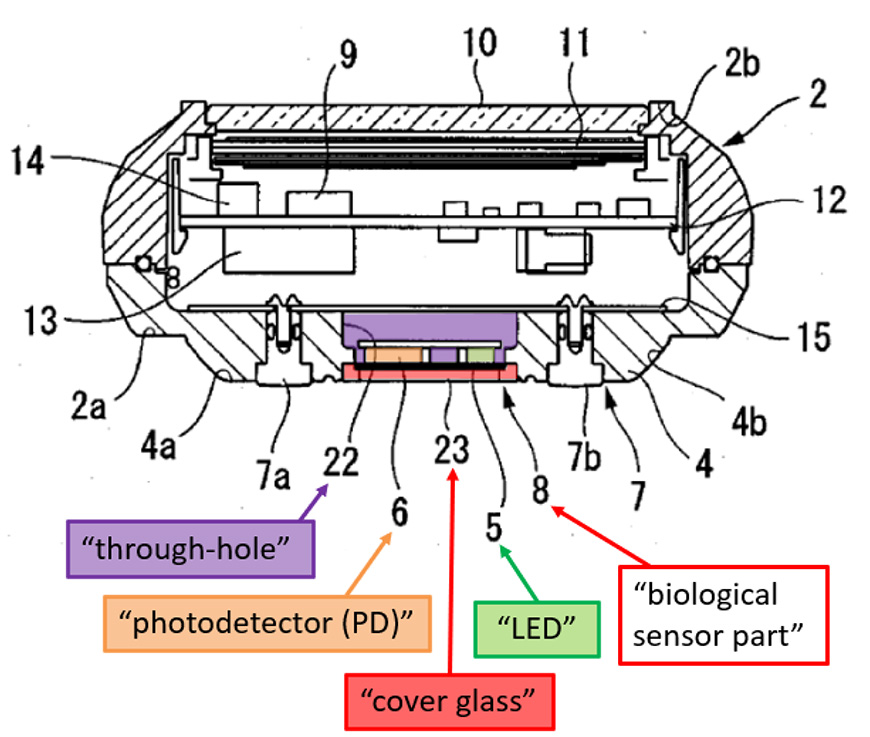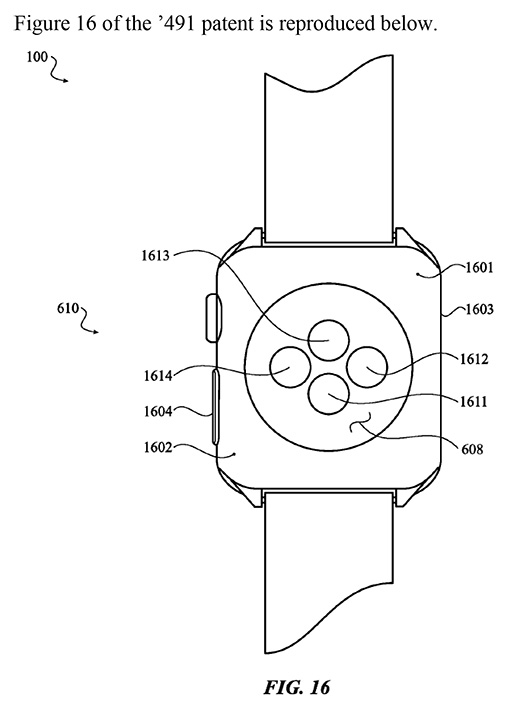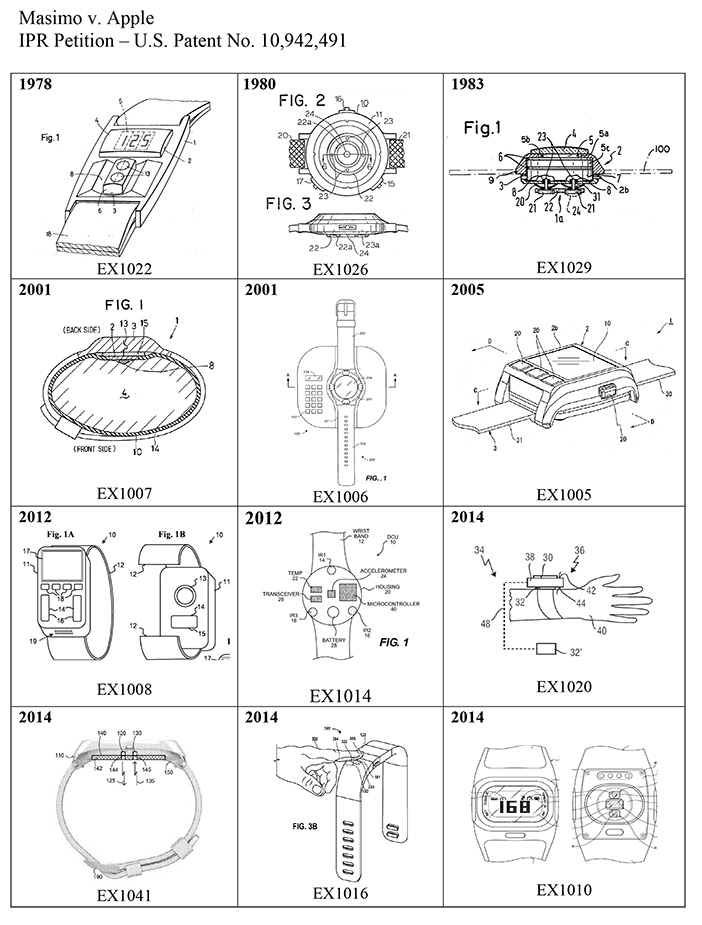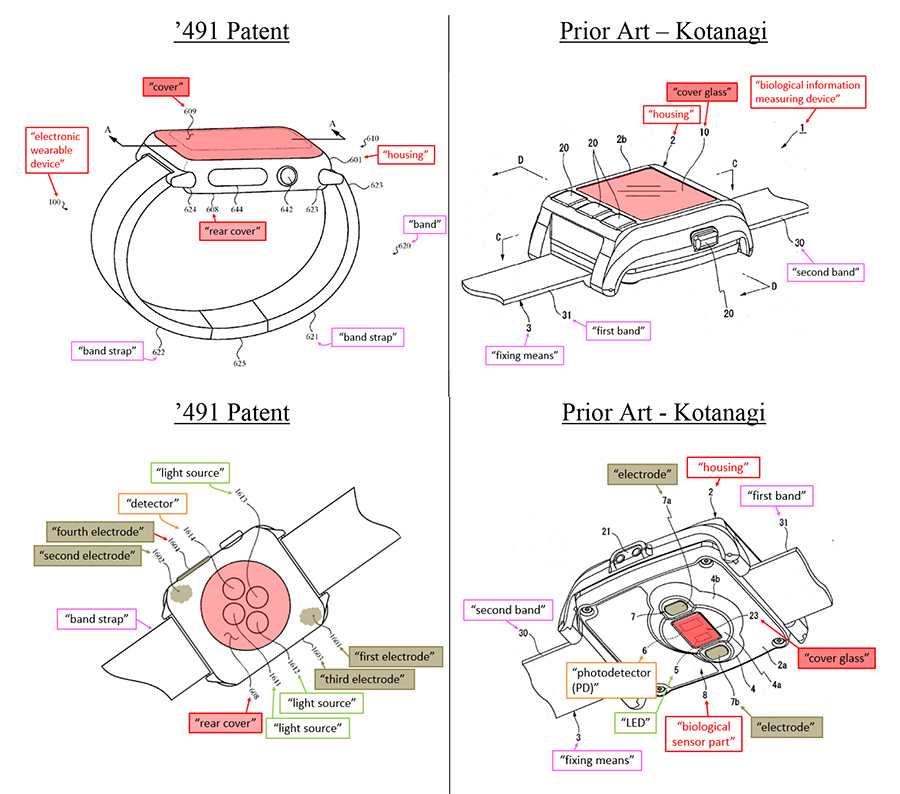
While many things have changed in the wake of Joe Kiani’s exit from Masimo Corporation (Nasdaq: MASI) – and many more changes are likely still to come – one thing continues on, the many lawsuits existing between Masimo and Apple Inc (Nasdaq: AAPL). And in the last few days, we have learned of two significant developments in that regard. One is a significant win for Masimo…and the other a significant win for Apple.
However, the war between these combatants continues…
Learn more about these recent legal decisions in the battle of Masimo and Apple
What’s most remarkable about these latest legal developments is that Masimo has made no announcements about them. That is especially noteworthy when you consider Masimo scored what many would say is a major win in one of the many patent infringement lawsuits that exist between the two combatants. In the past, Masimo would have been screaming this news from the rooftops the day the courts announced them. But now…crickets…
Has the exit of Joe Kiani caused Masimo to lose its stomach for all of these costly and time consuming battles with Apple? I guess that remains to be seen, but in the meantime there are definitely developments in that battle worthy of reporting.
Issue #1 – Apple Sues Masimo for Infringement of a Patent; Masimo Challenges that Patent and Wins
Masimo’s win came from a petition to the Patent Trial and Appeal Board in which it challenged claims raised by Apple in the originating lawsuit, Apple Inc. v. Masimo Corporation and Sound United LLC, filed in Federal Court in Delaware. The originating lawsuit alleged – among other things – that Masimo’s smartwatch infringed on Apple’s utility patent 10,942,491 B2 (“the ‘491 patent”) for smartwatch feature implementation. Specifically, Apple asserted that Masimo infringed on 19 separate claims against the ‘491 patent.
Apple’s ‘491 patent is for “a wearable electronic device having a range of features, including touch input, force input, an interchangeable attachment system, health monitoring functionality, wireless power charging, wireless authentication and transaction functionality, and other features and functionality.”

Was Apple’s Innovation ‘Unpatentable’?
In response, Masimo petitioned the Patent Trial and Appeal Board for an inter partes review (IPR) of the patent, challenging all of Apple’s claims on the grounds of “unpatentability.” An inter partes review is a patent trial process where a third party can challenge the validity of a patent to the United States Patent and Trademark Office.

Without getting too bogged down in details, in order to win its challenge of the ‘491 patent, Masimo needs to show that the invention is not patentable – usually due to it not being truly unique, but rather inevitable or “obvious” based on “prior art” from other earlier patents of the same capability. In this case, Masimo found several examples of prior art that it presented to the PTAB. Apple then tries to convince the judges that its version is truly unique.

The Administrative Patent Judges Deliver Their Opinion
In the end, after a lot of back-and-forth bickering, Administrative Patent Judges Ken B. Barrett, Josiah C. Cocks, and Robert L. Kinder determined: “Petitioner has shown by a preponderance of the evidence that claims 1-19 of the ‘491 patent are unpatentable over the relied-upon references.”
| Claim(s) | 35 U.S.C. § | Reference(s) / Basis | Claim(s) Shown Unpatentable | Claim(s) Not Shown Unpatentable |
|---|---|---|---|---|
| 7, 11, 14, 16 | 103 | Kotanagi, Honda | 7, 11, 14, 16 | |
| 1-3, 5, 13, 17 | 103 | Kotanagi, Honda, Choi | 1-3, 5, 13, 17 | |
| 8, 15 | 103 | Kotanagi, Honda, Fraser | 8, 15 | |
| 9 | 103 | Kotanagi, Honda, Orr | 9 | |
| 12, 18 | 103 | Kotanagi, Honda, Park | 12, 18 | |
| 4 | 103 | Kotanagi, Honda, Choi, Park | 4 | |
| 10, 19 | 103 | Kotanagi, Honda, Jabori | 10, 19 | |
| 6 | 103 | Kotanagi, Honda, Choi, Jabori | 6 | |
| Overall Outcome | 1-19 |
As you can see in the table above, it was a total win for Masimo and basically renders Apple’s ‘491 patent moot. Of course, Apple has some options it can pursue, such as filing a reissue application or request for reexamination of the challenged patent. However, with this PTAB decision, those options become much more of a long shot.
Issue #2 – Masimo Loses Summary Judgment Claim of Apple’s ‘Inequitable Conduct’
In a dizzying array of no less than four separate lawsuits – two different fundamental lawsuits and two related countersuits – between these combatants in the U.S. District Court for the District of Delaware, we find more patents at issue as Apple continues to press its patent infringement cases against Masimo. One of these lawsuits, by the way, includes the previously mentioned ‘491 patent, which as we now know is dispatched from dispute…maybe.
This collection of lawsuits is before the Honorable District Judge Jennifer L. Hall, who is busy at work trying to sort all of this out. These cases are hotly contested and intensely debated. In the two fundamental underlying cases, Apple is asserting a range of patents being infringed upon by Masimo.
Underlying Lawsuit #1 – Infringement of Design Patents; Underlying Lawsuit #2 – Infringement of Utility Patents
In the first underlying case, Apple asserts that Masimo’s W1 watch infringes on multiple design patents, mostly related to the electrode design on the W1’s back, as well as the W1 charger. Masimo asserts a number of defenses “unenforceability due to inequitable conduct,” and counterclaims seeking a judgment by the court “that its products do not infringe the Asserted Design Patents,” and that “the Asserted Design Patents are invalid and unenforceable.”
In the second underlying case, Apple alleges that Masimo infringes on a range of five different utility patents (known as the “Asserted Utility Patents”). As they did in the first case, Masimo asserted a number of affirmative defenses and counterclaims, including a declaratory judgment that its products do not infringe the Asserted Utility Patents and that these patents are invalid and unenforceable. However, in this second case, Masimo chose to assert additional counterclaims, including, “antitrust, false advertising, deceptive practices, and patent infringement claims.”
Masimo Alleges ‘Inequitable Conduct’ by Apple; Apple Pounces
Let me draw your attention to the defense asserted by Masimo of patent “unenforceability due to inequitable conduct.” In essence, Masimo is alleging that Apple has committed fraud in its filings with the Patent and Trademark Office (PTO). This is a heavy allegation, and most lawyers will tell you fraud is hard to prove.
Apple pounced, filing a Motion for Summary Judgment on Defendants’ Inequitable Conduct Counterclaims. With whom will the judge side in this slugfest between two punch-drunk boxers? With this Summary Judgment Motion, Apple felt confident that Masimo would not be able to prove it committed fraud on the PTO. They further sensed the judge would not find its conduct inequitable, and that win could quickly delete a significant chunk of this litigation. In essence, Apple was saying to Masimo…OK guys, put up or shut up.
Masimo’s ‘Theories’ of Inequitable Conduct by Apple ‘Have Morphed Over Time’
In discussing her analysis of the issues put before her in the Motion for Summary Judgment, Judge Hall noted that “Masimo’s proffered theories of inequitable conduct have morphed over time…” Ultimately, Masimo settled on the theory that “an Apple in-house patent agent and the named inventors of the Asserted Design Patents ‘knowingly withheld from the PTO…the names of the engineers who were the actual inventors’; and…that those same individuals knowingly withheld ‘the functional nature of the claimed designs.'”
The judge goes on to say, “At the outset, there are certain fundamental flaws with Masimo’s theories.” She determines that Masimo has misinterpreted the patent law. She also goes on to determine that Masimo has failed to show any evidence that Apple deliberately withheld information on key facts from the PTO and – this is important – that it deliberately did so with “the intent to deceive.”
‘No Fair-Minded Factfinder Could’ Come to Masimo’s Conclusion
At each of the points asserted by Masimo as to Apple’s inequitable conduct, the judge’s analysis ended with a statement much like this one: “No fair-minded factfinder could look at the evidence presented by Masimo and conclude that the single most reasonable inference is that the named inventors knew about the allegedly withheld fact and withheld it with a specific intent to deceive.”
For the reasons explained in the Court’s Memorandum Opinion issued on this date, IT IS HEREBY ORDERED that Apple’s Motion for Summary Judgment on Defendants’ Inequitable Conduct Counterclaims…is GRANTED.
The Honorable Jennifer L. Hall, From Order Granting Apple’s Motion for Summary Judgment on Masimo’s Inequitable Conduct Counterclaims
So Masimo’s claims of Apple’s inequitable conduct are out.
P.S.
As I was going to press with this story, the court additionally announced its decision on a Motion for Summary Judgment by Masimo that sought to invalidate Apple’s ‘483 patent for obviousness (an argument that was successful with PTAB on the ‘491 patent). The judge denied this Masimo motion.
Learn more about Apple and its products by visiting apple.com.
See all that Masimo has to offer at masimo.com.





Leave a Reply